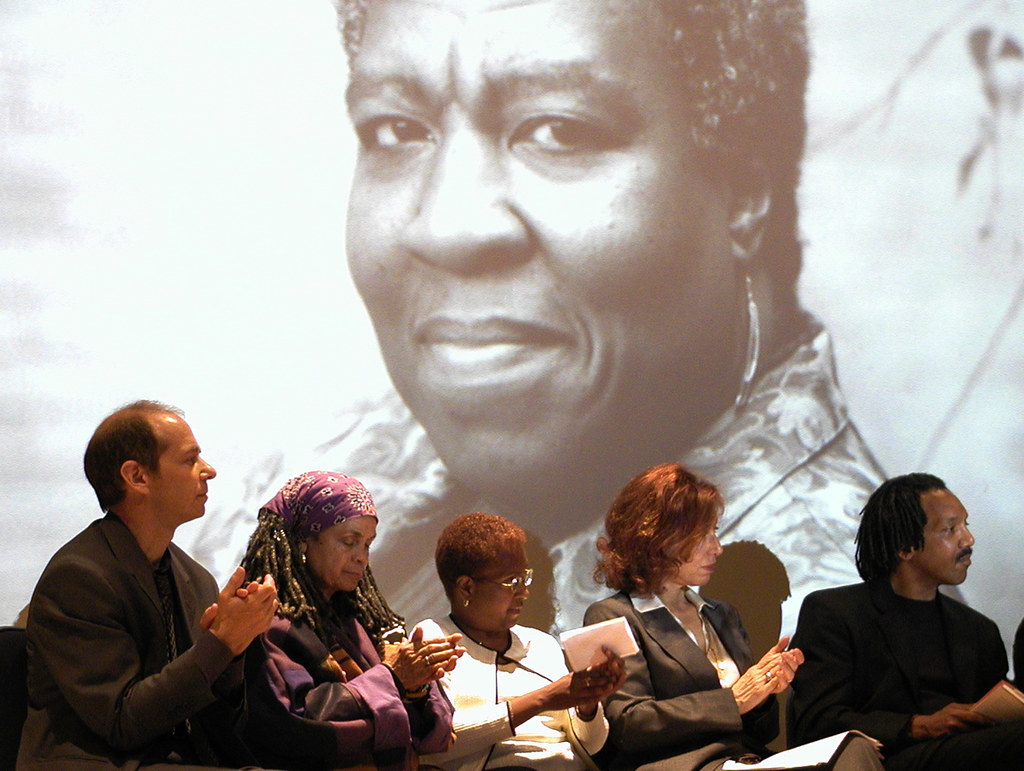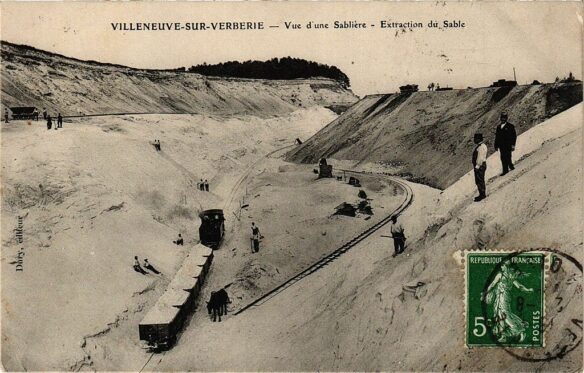A 1993 dystopian novel imagined the world in 2024. It’s eerily accurate – the Washington Post
Excerpt:
Octavia Butler’s ‘Parable of the Sower’ predicted devastating climate change, inequality, space travel and ‘Make America great again’
This is life in 2024.
Or at least it’s life in 2024 as imagined by the writer Octavia Butler 31 years ago.
“Parable of the Sower,” a 1993 novel by the late science fiction writer and MacArthur Fellow, depicts a future America ravaged by ecological collapse and civil unrest. The book’s narrator, African American teenager Lauren Olamina, begins writing a journal in July 2024 documenting the upheaval.
In the time it’s taken us to reach 2024 for real, Butler’s story has been adapted as an opera and a graphic novel; a movie adaptation is also in the works. In 2017, director Melina Matsoukas cited Butler among the Black thinkers who inspired her “Formation” video from Beyoncé’s award-winning album “Lemonade.”
In September 2020 — perhaps fueled by an interest in apocalyptic fiction prompted by covid-19 lockdowns — “Parable” appeared on the New York Times bestseller list for the first time, 27 years after publication.
Butler didn’t live to see the renewed interest in her ninth novel — she died in 2006 — but she indicated that the issues faced by the characters in “Parable” and by the United States today were inevitable…
ADDITIONAL READING . . .
How Octavia Butler Told the Future - the Atlantic

Excerpt:
After witnessing a massive fish kill on her ancestral home waters, Yurok tribal attorney Amy Bowers Cordalis dedicated her life to reversing the generations-long destruction wrought by the Klamath River dams.
Undammed follows her journey to free the Klamath, from testifying before Congress to passing down fishing traditions within her young family…
DIRECTED AND PRODUCED BY: Shane Anderson
EXECUTIVE PRODUCERS: Monika McClure, Alex Lowther, Nicholas Blixt
CREATIVE PRODUCER: Maya Craig
DIRECTORS OF PHOTOGRAPHY: Maya Craig, Seth Hahn
ORIGINAL SCORE: William Ryan Fritch
EDITED BY: Will Miller, Shane Anderson
ASSISTANT EDITOR: Jesse Clark
ADDITIONAL CINEMATOGRAPHY: Shane Anderson, Derek Knowles, Josh Murphy, Edythe McNamee, Whitney Hassett, Jason Hartwick, Tyler Parker
SOUND: Daniel Smith
PROD COORD: Jessie Sears
PROD CONSULTANT: Ashley Bowers
SOUND MIX & DESIGN: Bijan Sharifi
GRAPHICS: Scott Hanshew
COLOR: James LeJeune
Watch Full Short Film:
The Visions of Octavia Butler | Interactive - the New York Times

Excerpt:
After witnessing a massive fish kill on her ancestral home waters, Yurok tribal attorney Amy Bowers Cordalis dedicated her life to reversing the generations-long destruction wrought by the Klamath River dams.
Undammed follows her journey to free the Klamath, from testifying before Congress to passing down fishing traditions within her young family…
DIRECTED AND PRODUCED BY: Shane Anderson
EXECUTIVE PRODUCERS: Monika McClure, Alex Lowther, Nicholas Blixt
CREATIVE PRODUCER: Maya Craig
DIRECTORS OF PHOTOGRAPHY: Maya Craig, Seth Hahn
ORIGINAL SCORE: William Ryan Fritch
EDITED BY: Will Miller, Shane Anderson
ASSISTANT EDITOR: Jesse Clark
ADDITIONAL CINEMATOGRAPHY: Shane Anderson, Derek Knowles, Josh Murphy, Edythe McNamee, Whitney Hassett, Jason Hartwick, Tyler Parker
SOUND: Daniel Smith
PROD COORD: Jessie Sears
PROD CONSULTANT: Ashley Bowers
SOUND MIX & DESIGN: Bijan Sharifi
GRAPHICS: Scott Hanshew
COLOR: James LeJeune
Watch Full Short Film:
ALSO OF INTEREST . . .
TED-Ed (02-25-2019):
Why should you read sci-fi superstar Octavia E. Butler?
Much science fiction features white male heroes who blast aliens or become saviors of brown people. Octavia E. Butler knew she could tell a better story. She built stunning worlds rife with diverse characters, and brought nuance and depth to the representation of their experiences…
Storied – PBS (06-29-2021):
Octavia Butler, The Grand Dame of Science Fiction | It’s Lit
If you are a fan of science fiction a name you should be familiar with is Octavia E. Butler. One of the most prolific and important Black authors in the genre, Butler’s storytelling pushed the boundaries of what Black people were allowed to be in science fiction…Hosted by Lindsay Ellis and Princess Weekes..
EXHIBITION:
Hyde Park Art Center (Exhibit runs from 11-11-2023 through 03-03-2024):
Candace Hunter: The Alien‐Nations and Sovereign States of Octavia E Butler
In The Alien‐Nations and Sovereign States of Octavia E Butler, Candace Hunter presents new works created with synthetic plants, remnants of a sustainable food experiment, a reading nook, and painted doors as imagined portals to other worlds to create what she describes as an “alien lush space.” The exhibition addresses the concepts of nationhood. Candace Hunter poses questions about who is other, and in what situations do we see people as other to ourselves? How do we become universal?









